A turkey’s brain is the size of a pea, so one would think the match between man and turkey would be no contest. However, trying to outsmart a creature whose sole focus on this earth is to survive and reproduce is more challenging than one might guess.
Just like hunting any other species, learning what makes a turkey tick can make you much more successful in the turkey woods. Here are a few biological behaviors of hens and gobblers that will help you understand and better target turkeys.
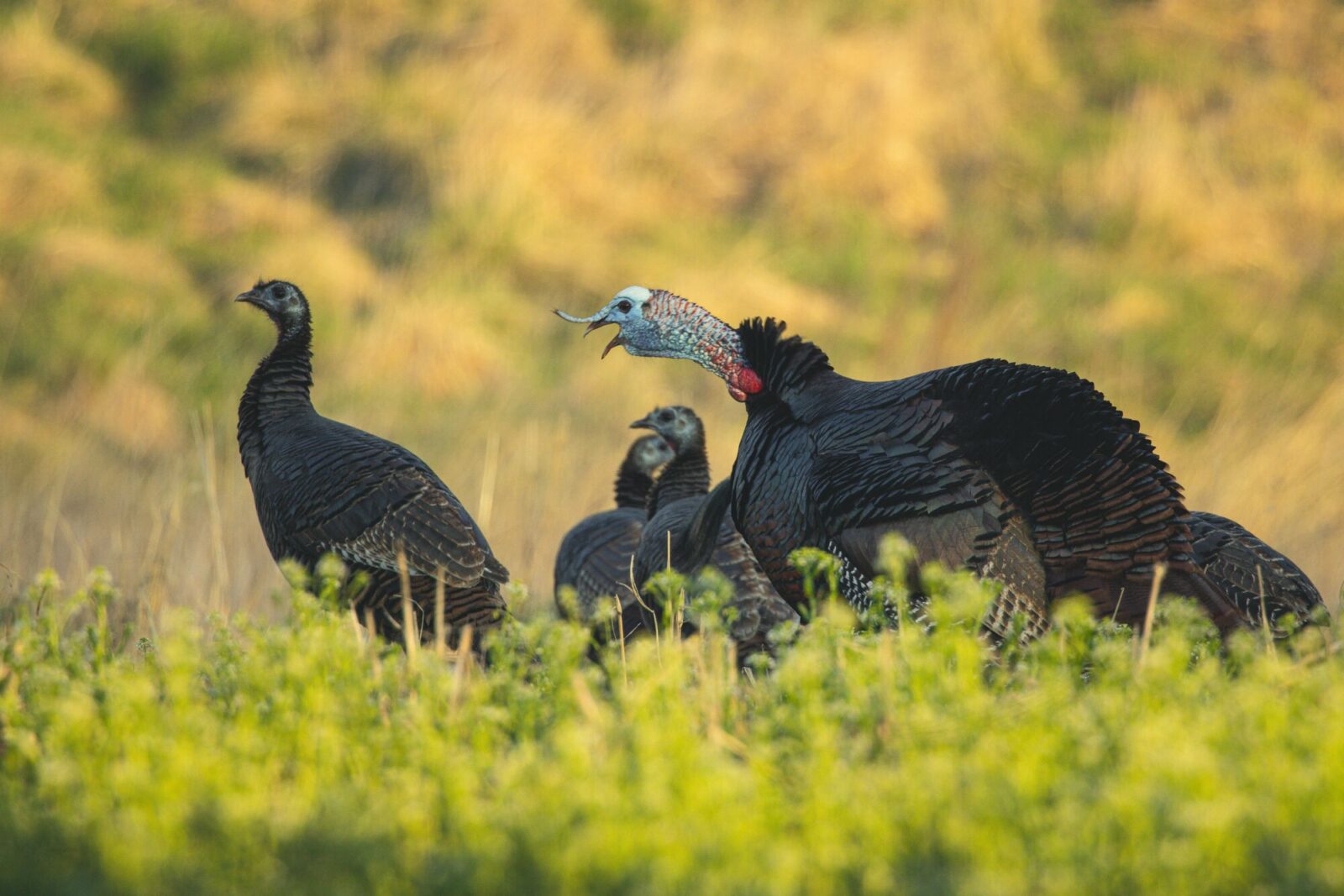
Why Do Turkeys Gobble?
Do you know why a male turkey gobbles in the spring? For many, that’s an easy question to answer: to attract a hen. However, many turkey hunters don’t take this biological driver into consideration. Let’s go into the reasoning behind why a longbeard gobbles, and what happens in nature.
A tom expects the hen to come to him. That’s why he’s sounding off all morning on the limb and then again when he hits the ground. He’s throwing out a sign to the ladies: He’s large, in charge, and waiting for a suitor. This rule dictates much of the interaction between a calling hunter and a gobbler’s actions. Always keep this rule in the back of your mind, and try to apply it to each hunt.
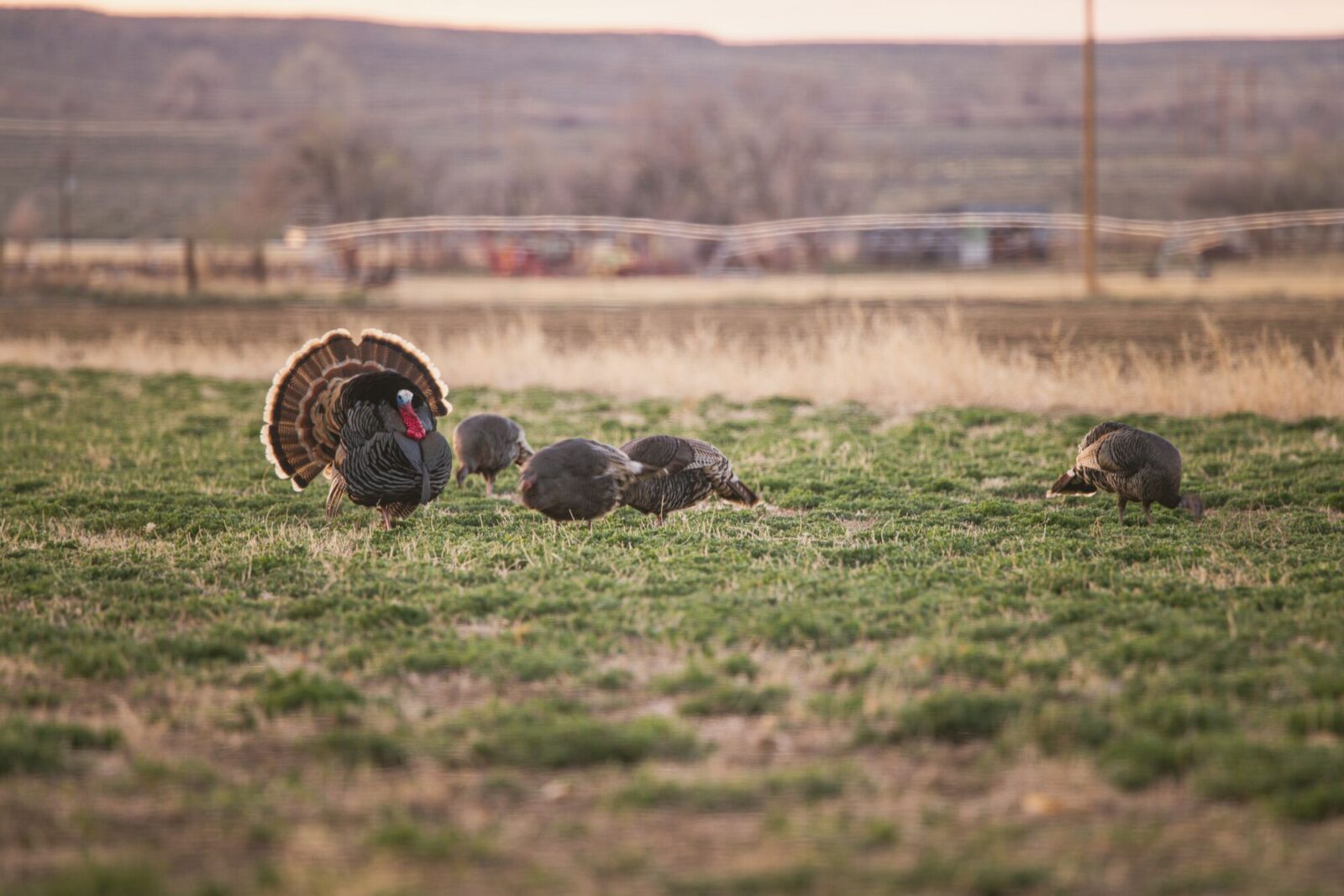
A tom expects the hen to come to him. Always keep this rule in the back of your mind, and try to apply it to each hunt.
Dealing With a Hung Up Gobbler
If you’ve been turkey hunting for any length of time, you’ve most likely dealt with a gobbler that has “hung up” outside of gun range. This again comes back to biology, and technically stems from the law of attraction. That longbeard is telling you, as the hen, “Hey, I’ve met you in the middle, now it’s your turn to come to me.” There are things you can do to combat the problem of getting stiffed by a bird outside of gun range. Part of the fun in turkey hunting is calling, and if you think that perhaps you’re calling too much, that’s most certainly the case.
In my experience, one situation will hang a gobbler nine times out of 10: You’re simply calling too much. It’s no different than dating…there has to be some mystery involved. Imagine yourself at a restaurant on a first date, and the guy or gal you’re with doesn’t stop talking, telling you their life story in painstaking detail, finally ending with confessing their love for you. It’s a lot, right? There’s really nowhere to go from there.
On the flip side, giving a gobbler just enough charming chit-chat to keep him curious is a killer technique. “Just enough” is relative, but that definitely doesn’t mean trying to make him gobble every 30 seconds. A few light clucks and purrs accompanied by a little leaf scratching is one of the deadliest moves in the game.
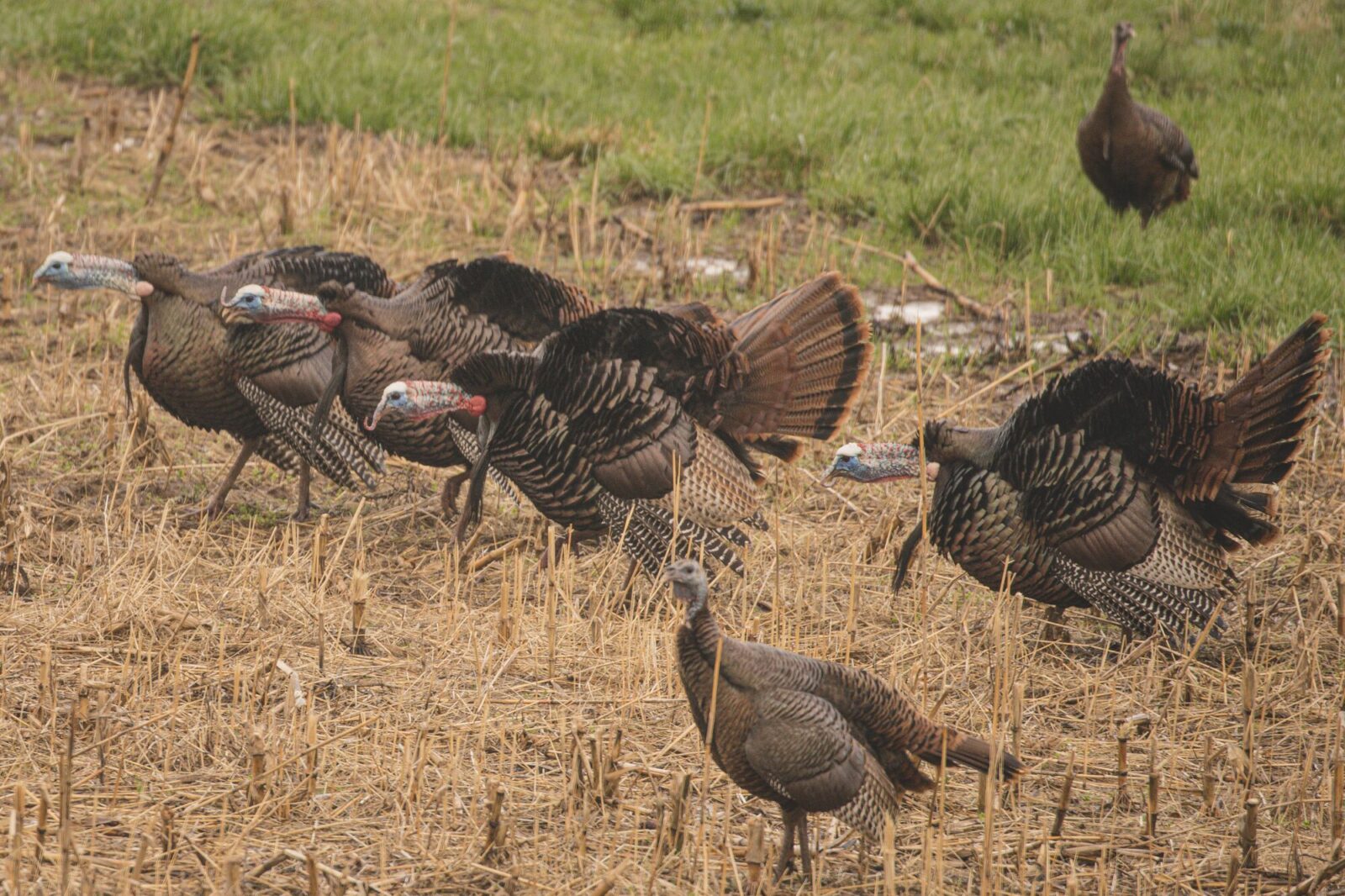
One situation will hang a gobbler nine times out of 10: You’re calling too much. It’s no different than dating…there has to be some mystery.
Another tactic is to get a longbeard fired up and then leave him hanging. When the bird is out 150-300 yards, get him worked into a tizzy, gobbling to excited yelping and cutting. When you stop calling and he’s still tearing the woods down, get ready because it’s likely he’ll come into your spot looking for the hen. Patience is important here because that gobbler will often sit in the same area, continuing to gobble waiting for the hen to come. Once he realizes that the hen isn’t coming, he’ll start making his way towards you searching for that loud-mouthed hen.
A similar technique is the runaway hen. You can use this tactic with a partner or by yourself. If you have a friend in the woods with you, have the gunner set up 50-150 yards in front of the caller. The distance depends on the terrain and thickness of foliage or cover—if it’s a big open, hardwood bottom, the caller will need to be further back than in a thicket. The gunner begins to call, and then transitions to your hunting partner behind. This will make that gobbler think the hen is leaving him, and he’ll be in hot pursuit. The goal is to have the gobbler come right past the gunner completely unaware of your presence. This is also another effective technique to combat a bird notorious for hanging up outside of gun range.
If you’re going solo you can implement this same technique. Get close to his location—inside 150 yards if possible—and start calling. Quickly drop back imitating a hen leaving, then sneak back into your original position. This tactic is more difficult solo, but it’s a great last-ditch effort to kill a hung-up gobbler.
Turkey Nests and Behavior
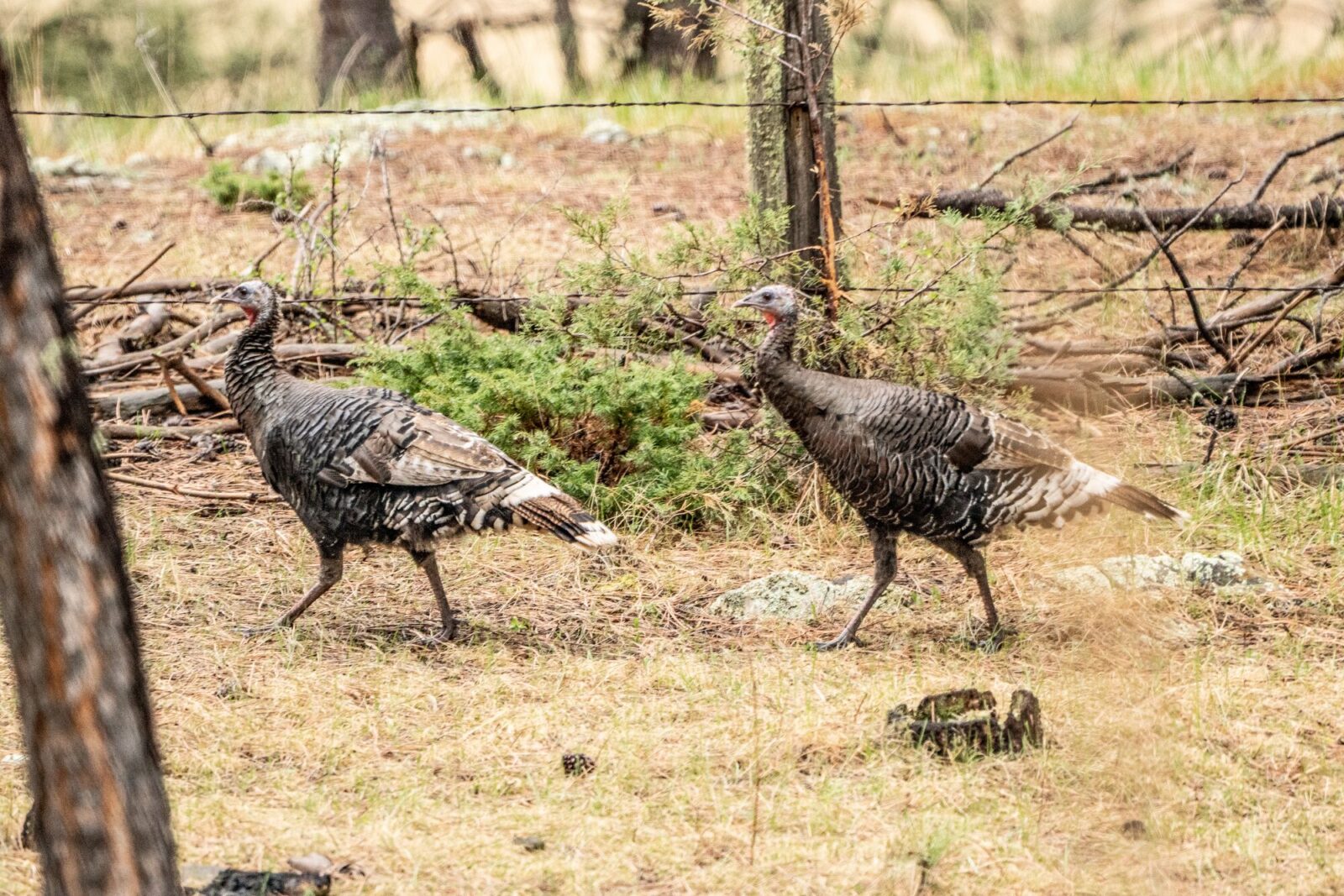
As temperatures start to get warmer and days become longer, it’s time for breeding season in the turkey woods. After a gobbler attracts the female and breeds, the hen will start searching for a nest site. Generally, the hen is looking for a fairly dense understory, with cutovers and other early successional habitats being ideal. The hen will become secretive, trying to avoid predators. She will lay roughly nine to 13 eggs during a 14-day period.
Once these eggs are laid, the hen will spend the majority of her time on the nest, only leaving for short periods of time. She will incubate the eggs for 26 to 28 days.
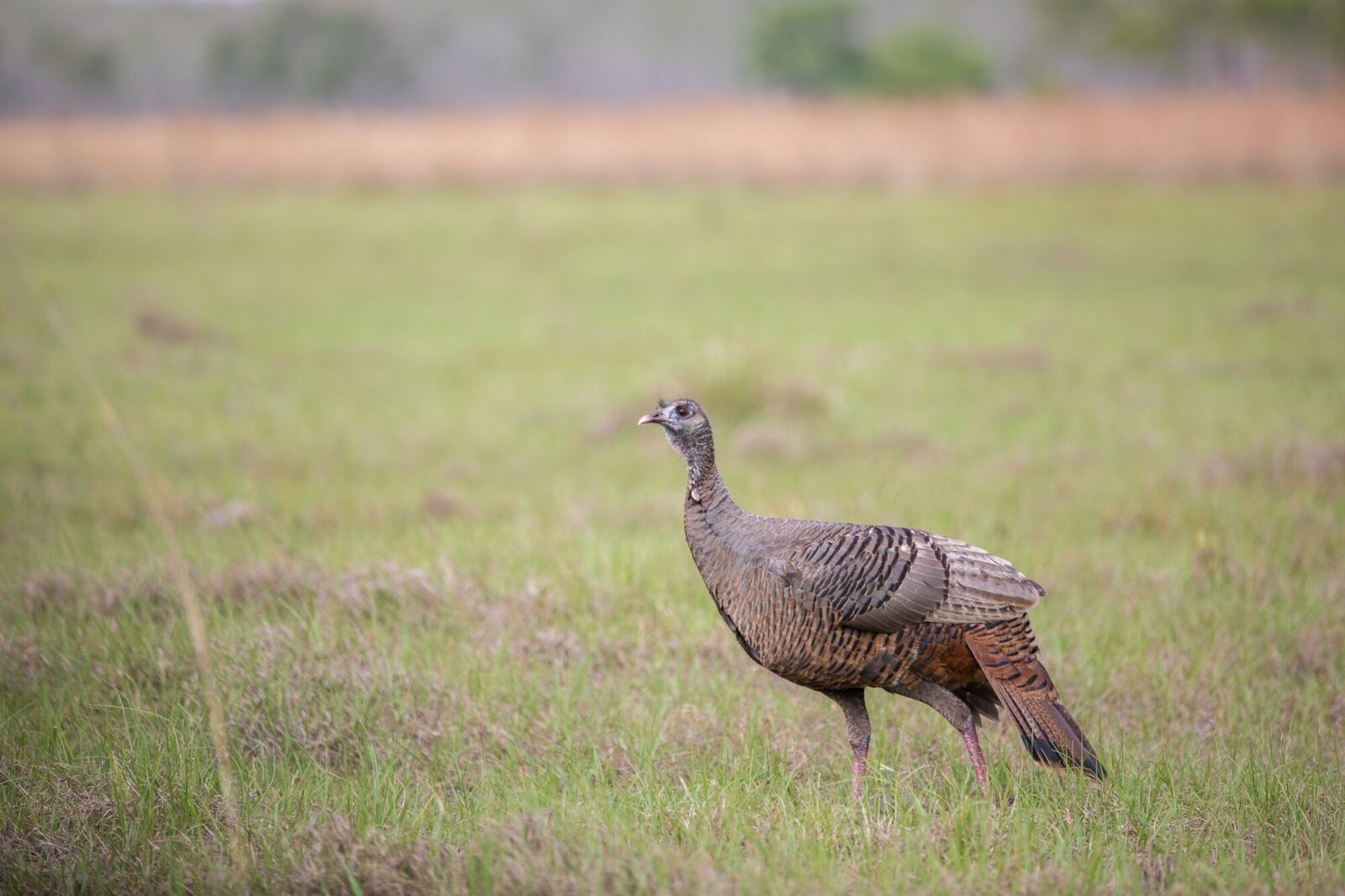
This is a wonderful opportunity to kill a gobbler. As hens nest, it eliminates competition for you. Hens typically leave their nests early and late in the day to dust, feed, and get water. Gobblers will frequent these areas in search of hens. The easiest tactic is to find dustbowls made by hens, and wait for a lonesome longbeard to stroll past.
Toward the end of the year, gobblers often become less vocal than in the early season—but when you hear one sounding off, you’re also less likely to have a hen steal him. After a long winter, many hunters are eager to get out in the woods, when there is more hunting pressure and gobblers are more likely to be flocked up. This makes them harder to hunt. By the end of the season, many hunters have lost interest or killed a bird. This makes it a perfect time to schedule some vacation days and get into the woods with less hunter and hen competition.
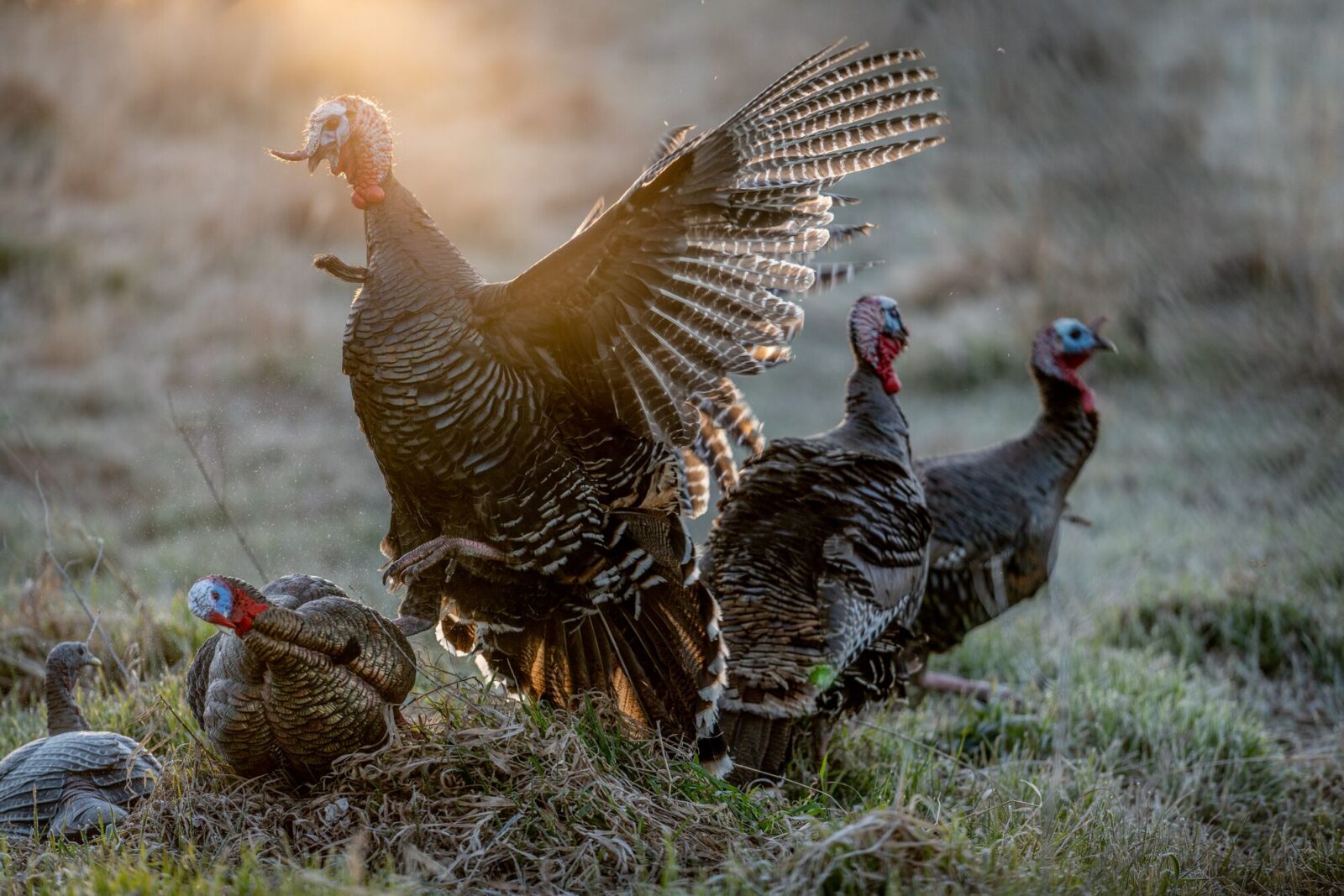
Find dustbowls made by hens, and wait for a lonesome longbeard to stroll past.
Turkey Pecking Order: Dominant vs. Subdominant Birds
Being a good “woodsman” is hands-down the greatest skill you can have in your repertoire. That skill alone has killed more gobblers than any call or decoy. By spending time in the woods, you’re more likely to pick up on small cues that can help you kill more birds. One of these cues is identifying which birds are dominant and which are subdominant. When you’re able to lay eyes on birds before and during the season, pay attention to their behaviors. For example, a dominant bird will most likely be in strut most often and isn’t afraid to chase off younger birds. There can be different tactics to hunt both these birds.
If you’ve spent any time elk hunting, you’ve probably heard the analogy, “turkeys are like small elk.” It’s actually quite true, and you can implement the same tactics when trying to kill the “herd” or “satellite” gobbler.
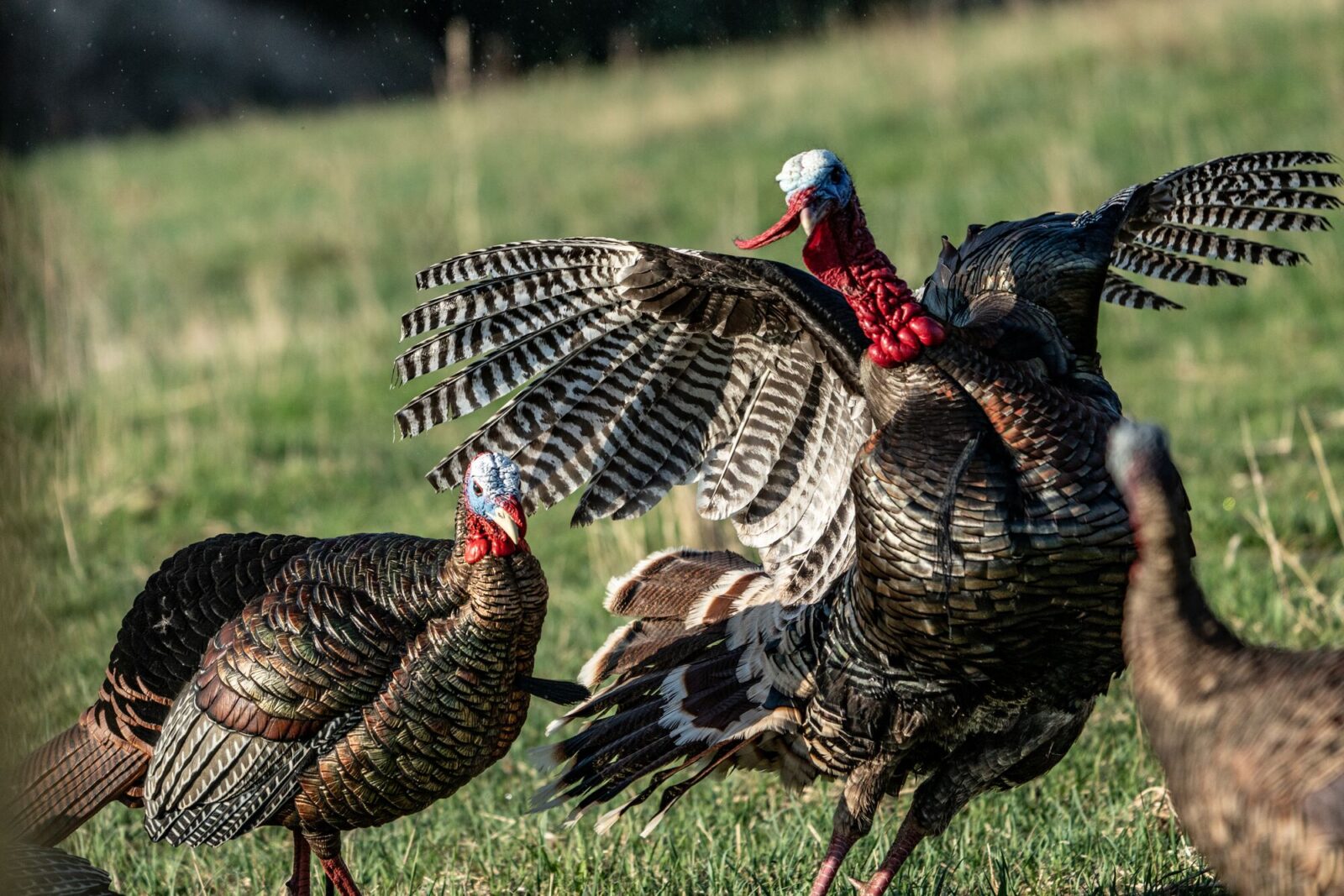
Here’s a scenario: you’ve set up on a lone gobbler with a harem of hens. You call and call but that dominant tom isn’t breaking off. Have patience, because oftentimes the yelps and gobbling of the group will pull in a subdominant gobbler. Instead of going into the midst of the group and risking getting chased off, he might skirt around and hear your calling, opting for love instead of war. You can implement a similar tactic when calling to a flock of birds with multiple gobblers. By staying within 150-300 yards of the group, you’ll often get a subdominant bird to break off and give you a shot.
On the flip side, if you’re dealing with a dominant bird, slightly different tactics can be used. If it’s a lone gobbler with a flock of hens and you start calling at a distance over 200+ yards, hens can actually carry the gobbler away. In addition, that dominant bird won’t want to leave his group of hens for an unknown bird—remember, she should be coming to him, after all.
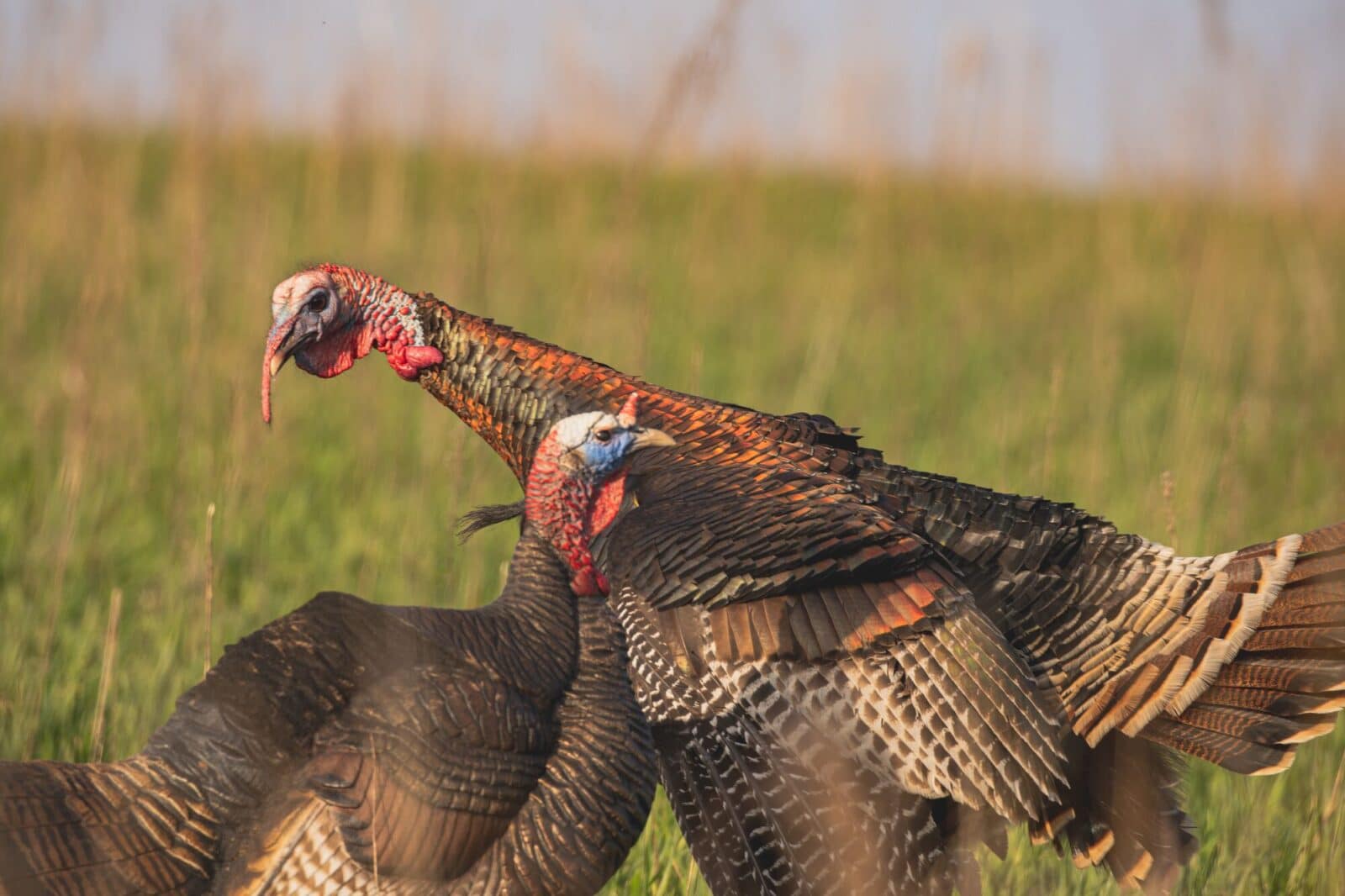
Have patience, because oftentimes the yelps and gobbling of the group will pull in a subdominant gobbler.
It’s time to burst his bubble. Find a situation where you’re able to sneak under 100 yards, or if they’re moving, try to get in the flock’s line of travel. You can put out a strutter or jake decoy to elicit his fighting side. By getting inside 100 yards, that bird will be more likely to pick a fight with your decoy. You can also accomplish the same thing with a call. Try using a gobbler shaker such as the Primos Shaker Call or making a gobbler yelp, which is a slower deeper version of a hen yelp. This will make that dominant bird think a longbeard or jake has slid in to get cozy with his ladies.
By learning the behaviors and biological drivers of turkeys, you’ll be able to use it against them and ultimately be more successful.